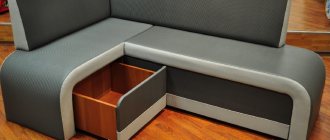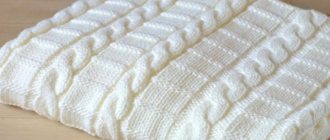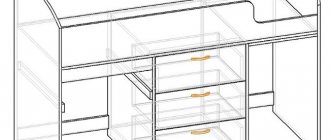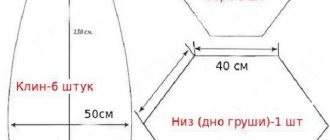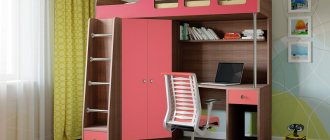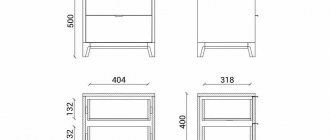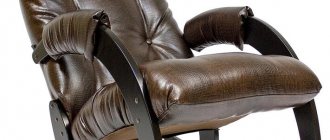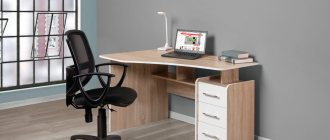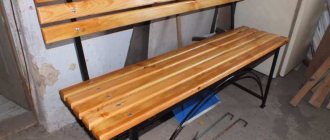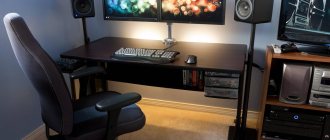A lady acquaintance once asked one of the founders of the Encyclopedia Denis Diderot: at what age should one begin raising a child? “How old is yours?” – he asked in response. “Oh, he’s only one day old!” The philosopher shrugged: “In that case, you’re already a day late.”
A child will need a high chair not on the first day of his life, but when the baby begins to sit up independently, at about 6 months. But its role in the formation of the personality of a new person is by no means small. Firstly, the formation of the musculoskeletal system and correct posture begins on the chair. Secondly, from the high chair the child learns to handle things. This is his first property that is not a toy. Children who grew up on the lap of their mother or grandmother, on average, get along worse with others and realize their abilities less well.
The interests of parents also, of course, cannot be discounted. Feeding a small child often brings out a storm of emotions that parents may simply find exhausting at the moment. Feeding something that is spinning like a spinning top on your lap, calmly and kindly, costs a lot of effort; the child feels it and only gets more excited, which does not benefit him at all. In addition, you need to protect clothes, carpets, and furniture from volleys of porridge, soup or puree.
Therefore, out of a fairly large number of varieties of children's chairs, the first in importance and time to start using is a high chair. A little later, after about another 4-6 months, he will need a play/work chair. We will deal with them in this order.
General requirements
To make a useful and comfortable high chair for your baby with your own hands, you first need to take ergonomics into account.
First, the chair for younger children should not be too soft: in order for the child’s skeleton to grow properly and muscles to develop, his body must feel reliable support. It is advisable to make the play chair generally rigid, but on the high chair and work chair, relatively thin soft pads on the seat and back are needed. A gaming chair and a work chair are most often the same, so what should we do?
These conditions can be combined by sewing cushions of the following structure according to the size of the seat and back (from bottom to top): canvas or burlap - padding polyester 5-7 mm - flannel, calico or flannel - decorative fabric. To secure them, you will have to sew on straps that tie/fasten under the seat or behind the back, but this makes making the chair itself and caring for it easier.
Second, avoid plastics. For children's items today, the safety of high-density polyethylene (produced without the use of catalysts) and PET has certainly been confirmed, but there are no suitable blanks made from them for home craftsmanship. PVC seat upholstery is a relic of the past: when there were no diapers, without it diaper rash in babies was more common.
Dimensions of high chairs for babies
The next point is the size of the chair. The table of recommended sizes of children's chairs for games and activities is shown in Fig. The main parameter for choosing it is the growth group. The back height is obtained by subtracting the seat height from the total height of the chair; in a high chair it must be determined separately, because his seat is raised for the mother's comfort. The table has been compiled for child care institutions; the dimensions of a chair for a child in a family can be found more accurately and simply: we look carefully at who he matches in height and build; about eyes, eyebrows, etc. disputes later. Then the prototype parent shows which chair she/he is most comfortable in, we take the dimensions from it and multiply by 0.55. A child on such a seat will be fine from about a year to 4-5.
Note: based on the above, all dimensions of the product samples given below are subject to adjustment if necessary.
Work process
Drawings, dimensions, diagrams - all this is available on the Internet. You can also find photos and videos of the work process there. After creating a schematic drawing, you can start cutting out the chair for the child:
- Each piece of wood is processed with sandpaper before attaching them to each other.
- The dimensions must correspond exactly to the drawings, otherwise the high chair will not stand level.
- You need to connect from bottom to top in order to properly secure the seat.
Diagram We cut out the parts for the chair It is advisable to use a router with a copy cutter The base to which the seat will be attached The back and sides are ready The children's high chair is transformable, it can be folded and hidden The children's high chair is ready
Materials
Faulty design of a baby's high chair
What to make a high chair for a little one is also an important question. It is better not to use metal at all, or in small quantities (for example, fasteners) and so that the child does not have access to it. Children's bodies are generally more resilient than adults, but babies' skin is very sensitive. This is determined by the instinct of self-preservation: what is simply slippery and a little cold for an adult is a danger signal for a child. Since he himself cannot yet avoid her, he has to appeal to his parents. Those who have children know how. But they don’t always understand why, and that’s what makes them cry out loud.
For example, in Fig. on the right is the erroneous use of steel fasteners. “Intensive use of corners” not only does not strengthen the structure, contrary to the claims of its author, but it is also dangerous for the baby. An adult’s finger will go unnoticed in the corner with a self-tapping screw, but the baby may get scratched. In general, children don’t mind scratches, but if he is regularly placed in something that bites for feeding, then how will this chair affect the child’s psyche? The question is rhetorical.
Processing and finishing
So, we are left with practically only wood, MDF and laminated chipboard of class E0 in terms of phenol emission. In a high chair for a very young child, it is still better to use hardwood or MDF, they are completely chemical-free. Hypersensitivity to pine resin or traces of phenol-containing compounds occurs in about 1 in 400,000 babies, but how can you be sure it's not yours? It is impossible to identify in advance.
A highchair for babies is exposed to external chemical influences of approximately the same nature and to the same extent as a kitchen stool, but the sanitary and hygienic requirements for it are much stricter. Therefore, before assembly, the parts of a wooden highchair must be treated with a water-repellent and bactericidal composition, and the finished product must be covered with a protective layer.
There is also almost no alternative here: impregnation is a water-polymer emulsion or, instead, PVA diluted three to four times with water. The coating is water-based acrylic varnish. There is no reliable evidence of complete safety for children of other compositions for processing/finishing furniture. Be especially wary of stains; Children's furniture with varnish is best left as is. Design and decor in this case are by no means determining factors.
About plywood
When making a high chair for the firstborn from wood, an amateur craftsman (who may be taking on furniture for the first time in his life) will have to face a number of technological difficulties, see below, respectively. section that cannot be overcome without a workshop and special tools. Plywood can help out; You can use it to do almost everything at home. But not every one. Simple birch (not waterproof and not baked) and also simple construction or packaging are definitely suitable. The latter is covered with so-called veneer. pine trees cut down in winter. Dried pine already contains almost no resins, and in the process of making plywood, their remains are completely removed. These types of plywood are made with casein glue, which is absolutely safe for children. They are given moisture resistance and additional strength by the impregnation described above, but twice: a second time after complete drying (about a day) of the initial one.
About the glue
Due to its combination of qualities, PVA is most suitable for gluing and gluing in the manufacture of children's furniture. Modern furniture pur-glues are much stronger, but also more expensive; for a product whose service life does not exceed 5-7 years, the first is unimportant, but the second can “bite”. But PVA has the following advantages:
- Absolutely harmless and safe, which has been proven by more than half a century of experience. As they say, at least eat it; even if the liquid gets into the eyes, it is washed off without any residue with water, if you rinse it immediately.
- PVA drips can be easily cut off with a mounting knife, and their remains can also be easily sanded clean.
- The PVA joint can be separated by warming it up properly with an ordinary household hairdryer. This is important if the high chair needs to be disassembled and stored until the next addition to the family. Also, if you need to replace its individual parts as the child grows, see below.
Classification of growing chairs for children
When purchasing such elements of children's interior, it is worth considering that they are divided into certain categories according to the material of manufacture, design features and purpose. The basic design of these products is the same. It includes a seat and a footrest. The following parameters must be adjusted:
- Planting depth;
- Seat height;
- Backrest angle;
- Back lift level.
Adjustable furniture can be adjusted to the individual parameters of each child, but the models themselves are divided into groups according to age criteria. The following product models are distinguished:
- For preschoolers;
- For schoolchildren;
- Universal.
Products for preschool children are made in the form of a high chair for feeding a baby. They are equipped with a small tabletop, backrest cushion and seat. Many products in this group have restraints in the form of seat belts. Manufacturers can equip adjustable furniture for preschoolers with pockets for toys, books, as well as leg pads or wheels. Such products are often called “overgrowth”.
For schoolchildren, models are produced whose height is adjustable to the height of the desktop. Due to the fact that children in this age group spend a lot of time at the table, experts recommend purchasing products with soft seats. Many people prefer to purchase orthopedic adjustable seats, which minimize the load on the child’s spine. Orthopedic models can be recognized by the absence of armrests, headrests and seat rotation functions. Their seat back has an ergonomic, curved shape. Wheel locking is often present in orthopedic designs.
Universal models are used for children of different ages. If necessary, they can even be used as a stepladder. They can withstand weight up to 100 kg.
The very first high chair
The most commonly used designs for chairs for feeding children are the following, in order of increasing complexity of manufacture:
- Stands/holders – boosters – for feeding the baby on an adult chair, hard and soft;
- Typical (classic) home folding high chairs;
- Children's transforming sets and “growing” (for growth) chairs;
- Stationary chairs for feeding babies.
The latter are used either in children's institutions for the youngest, or in wealthy households with excess living space. In both cases, the chair requires high strength: in children's homes it will be used by many generations, and wealthy owners care about prestige and also design. As a result, a stationary chair for feeding children turns into a rather complex product, the manufacture of which requires special tools and production conditions; for an example, see the drawings in fig.
Drawings of a stationary chair for feeding a child
Boosters
These are attachments or devices for feeding a child on a chair and at a table for adults. Hard booster chairs (the first 3 from left to right in the figure) save space in a small apartment, so they are quite popular.
However, it is impossible to make them fully compliant with the requirements of children's ergonomics. The second is for children from 6 to 9-12 months. they are of little use. Third, soft attachments to an adult chair (leading manufacturers invest a lot of money in their development) do not provide a complete guarantee that an angry fidget, delighted with his favorite juice, will not fall on his side along with himself, the booster and his dad’s chair.
Patterns of a pocket for feeding a child on an adult chair
Much more practical are soft boosters for feeding babies, which are no longer chairs, but something like a kangaroo pouch, on the right in the top pic. They cannot be used constantly; there is a risk of ruining the child’s posture. But at the dacha, picnic or on a trip, the pocket for feeding - the booster will be very useful, especially since it will take up almost no space in mom’s bag.
Making a soft booster for feeding a child is already a more feminine task, because... it is sewn; the pattern is shown in Fig; they are given without allowances for processing.
Note: the slings are inserted from the sides of the cape onto the back of the chair from under the bottom, brought out through the openings and tied or fastened.
Home classics
Design and dimensions of a folding chair for feeding babies
How the familiar folding high chair for feeding babies at home is constructed, and its dimensions are shown in Fig. Materials - timber 40x20, 75x20 (footboard and leg ties), 16x25 (backrest slats, seat apron, tabletop frame), board 100x20 (inserts into the frame of the front legs) and plywood 6-8 mm (seat, tabletop). Assembly, except for hinges, is on confirmats (furniture screws) 60x6.
The connections marked in red are hinged: the table tilts up, and the frame of the rear legs is pressed against the front ones. The bolt heads (M6-M8) are on the inside and covered with plugs, red mark with an exclamation mark. The seat is hung on the front support bar on card hinges.
To fold the chair, first lift the table and move the frame of the rear legs slightly back. Then the seat lowers itself, and the frame of the rear legs is pushed forward until it stops - the chair is folded. And when unfolded, the entire kinematics of this chair locks without additional clamps according to the principle of a dead center, and let the little eater wriggle there as he wants - the chair will stand under him.
The only technological difficulty in the manufacture of this chair is the joining of blanks for the side frames of the front legs on dowels (lamellas) in the mustache or dowels. But you can get around it if you make the front frame of plywood, see below. Its operational drawback is that the thickness of the package is more than 10 cm. For a pantry in a small apartment or a closet in the hallway, this can be too much. And here plywood comes to the rescue, see below.
Transformers and growing
Transformable children's chairs for all ages are on sale, 3 positions. on the left in Fig. They are really convenient and functional, but technologically complex: some of the necessary parts can only be made in a factory workshop. Accordingly, the cost of such chairs is quite high.
Transformable children's chairs
For repeating with your own hands, a more accessible set is a chair with a table, on the right in Fig. Which is what many people do, but they immediately discover that a set with an upside-down table takes up more space in the apartment than a children’s high chair and table separately.
But the main thing is that this building is unhygienic. When the child sits down at the table, the edge of the large tabletop closest to the floor in the feeding position will be literally under his hands. And also - the undersides of the legs in the 6-12 month position, which have now become legs, and even awkwardly protruding upward.
There are no materials that do not scratch or cause microcracks. It is impossible to remove ingrained dust from the floor, which is what microbes need. Changeling kits for small children have been on sale relatively recently, but there have already been cases when they became foci of infection. Self-made ones from wood only make the danger worse.
Curious transformable children's chair
The epidemic of fashion for transformable furniture (in this case there is no other way to say it) has given birth to real monsters, see fig. on right. When the child reaches table age, the chair is simply... sawed off, and the former supporting pyramid is turned over and becomes a table. Everything is clear about the hygiene of a large countertop, see above. As with a feeding table that is too narrow: there will be no food on the mother and on the floor only if a specially programmed robot is sitting on the chair.
And first of all, put yourself in the child’s place: there is a rigid fence on all sides. All that remains, as they say, is to put him on a chain. Secondly, a large table will be unusually rolly. Well, have you ever seen tables for neat adults whose legs converge downwards? It’s funny, of course, but whoever starts this at home will probably not be laughing.
“Growing” chairs
In general, if we are talking about a small child, it is better not to experiment with transformable furniture, excluding proven folding designs. For example, let’s take “growing” chairs, see fig. left. You can really sit on this from a simpleton to his dad, but it won’t be quite comfortable at any age. And in order to adapt the chair for growth for feeding, it will have to be turned into a product comparable in complexity to a stationary chair for babies.
How to take everything from plywood
High chairs for babies are often made from plywood. Many homemade designs turn out to be quite practical and good looking, on the left in Fig. However, once the need has passed, it is hardly possible to adapt them for something else, first. Second - see on the right in Fig. laid out parts. Material waste is estimated to be at least 60%. Although you can buy good plywood for 300 rubles per sheet 1550x1550, it would still be advisable to do without crooked scraps that are now useless.
Plywood high chair and layout of its parts
This is where it’s time to realize that an adult folding board chair made of plywood can be easily adapted for feeding a baby, see next. rice. Dad's for fishing or mom's garden, depending on who is in charge in the family. In terms of sanitation and hygiene, it is better, of course, to make this chair right away for a little one, and use it for adult use when he grows up.
Folding board chair made of plywood
From the remainder of cutting out opening A, you will get 2 struts for a child’s table with L-shaped legs; You will need to cut grooves for them in the sides of the chair. To feed a child, it is advisable to add a fabric back to such a chair: it will not reduce the comfort for adults, and it will not interfere with the folded chair hanging on the wall. A small tabletop is attached to struts on piano or card hinges, then the feeding table will also fold into a compact package.
Note: it is better to measure the dimensions of the struts using a ready-made, unfolded chair. This will be easier and more accurate than fiddling with trigonometry.
Scheme of a folding chair made of plywood
Another folding chair of the same type is shown in Fig. on right. It is smaller, 500x750 when folded. It’s not bad because from a sheet of plywood 1550x1550 there are exactly 6 of them, and the length fits into the trunk of almost any car. The letter w indicates the cutting width. In general, look at your child, yourself and your needs.
Kid-Fix
Kid-Fix is a domestic manufacturer. It specializes in chairs that are suitable for six-month-old babies and can perform their functions up to the first grade of school. The frame is designed in such a way that it can easily support a weight of more than 100 kg.
There are fewer color options than Norwegian competitors, only 8. The material of manufacture is birch. The material is also natural and safe, the company has sufficient experience, and the quality of the products is excellent.
Older chairs
At the age of about one year, the child will already need a chair on which he can sit down, move it, and rearrange it. Chairs for small children in the age category following babies are play chairs (on the left in the figure below) and work/study chairs, in the center. Working chairs for children differ from play chairs primarily in their armrests; They are necessary for the child to develop correct posture. Then, the seat height of the work chair can be immediately taken based on the oldest preschool age, i.e. up to 400 mm. In this case, you need a step; preferably repositionable. The approximate dimensions of a high chair for babies of the “second stage” are given on the right, but, as mentioned above, they need to be specified according to the child.
Drawings of high chairs for small children
Drawings of chairs for older children are given below. rice. On the left is a game of the simplest design. The legs are the optimal length for a child aged 12-36 months who often plays on the floor. Fasteners – wood screws 40x4.2.
High chair for a child “like an adult’s”
The chair on the right is more complicated; its parts need to be marked on a grid and grooves cut to connect them. But it is universal, playable and working. The small protrusions of the sidewalls above the seat are enough to prevent a normally active child from sitting down with half of his butt hanging in the air. The seat height of 400 mm is the maximum for very young children. It can be made minimal first, approx. 220 mm, and then change the sidewalls as they grow; It will take a little labor and plywood, but mom will have something to say to dad on occasion. So, if dad is prudent, it is better to immediately cut the sidewalls for growth.
This chair is basically easy to assemble, like a puzzle. In the mobile version, say, for trips to the country, you can leave it like that. But with constant use, the chair will soon become loose, no matter how tight the joints were initially. Therefore, it is better for a child of this kind to glue his home chair with PVA. Dismantling, if necessary, put into storage - see above, about glue.
Finally, there is a category of children who, having barely realized themselves in this world, want everything to be like an adult. This is generally a useful quality, but dad will have to work harder on a chair and other furniture for the child. The design and dimensions of a highchair “like an adult’s” are shown in Fig. on right. A wooden chair of this design will require quite complex technological techniques, but even in this case plywood will come to the rescue, see next. chapter.
Types of chairs
DIY high chairs come in different types. Before starting work, you should decide on one option, this will allow you to more accurately determine the amount of the option spent. You also need to know from what age and until what age a child should eat in a place specially prepared for him.
Starting from six months, the baby is able to visit a high chair for feeding. The structure must be made in such a way that the child cannot fall from it. A high chair for feeding a child should have high legs so that the child sits at the same level as adults. Knowing how to choose a high chair will help your baby feel comfortable at every feeding.
Highchair for feeding (option 1) Highchair for feeding (option 2) Highchair for feeding (option 3) Highchair for feeding (option 4) Highchair for feeding (option 5) Highchair for feeding (option 6)
The standard version of a high chair is a seat on long legs, to which a small table is already attached. This option can be placed anywhere, and the child pollutes only a certain area allowed to him. The combined children's high chair for feeding is a small high chair, well installed on a table-desk. When the baby grows up, the wooden chair is removed and turned into a play desk.
Technology and plywood
To make a high chair for children from wood, you need to know or will have to master how to make some carpentry joints: on dowels, using dowels (lamellas) and tongue and groove. How they are produced, using examples of carpentry, see the videos, arranged in order of increasing complexity:
Video #1: dowel connections
Video #2: corner connection with dowels for frame structures (bursting corners)
Video #3: tongue-and-groove connection
Video #4: direct keyway connection for joining board panels
As you can see, at home, with simple hand tools, only poses can be done quite well. #1. Pos. #2 and #3 for a novice carpenter will turn out by hand with ease, and for poses. #4 And a good professional cannot do without a workshop and special equipment. And now - shhh! - all this can be done at home by a “complete teapot”, using only a jigsaw and a little chisel. If the parts blanks are assembled with glue from 3 layers of plywood, the thickness is, respectively, 1/3 of the required one. Among other things, this technology makes it possible to assemble parts of complex shapes from small-sized fragments, which makes it possible to denser, i.e. cut the material economically.
How straight and angular tongue-and-groove joints are made in this way is shown in pos. 1 and 2 fig. resp. If the tenon is made trapezoidal with rounded corners, then the strength of the joint will increase several times, i.e. will be sufficient for adult furniture. This technology is not used in production - it’s a hassle and therefore unprofitable, but at home it’s better than buying or renting a machine for 60-100 thousand rubles.
Tongue-groove connections of plywood components
To glue a package of blanks into a PVA part, you also do not need any special devices:
- Lay plastic film on a flat floor or table.
- Both surfaces to be glued are coated with a thin layer of glue; It's better to use a brush.
- Leave the adhesive layers until they are semi-dry and tack-free, when the adhesive film begins to become translucent at the edges.
- Place the blanks in a bag and press them.
- Cover the bag with another layer of film and place pressure on it from a dispersed load (books, for example) at a rate of at least 20 kg per 1 square meter. m of glued area.
Note: because The blanks in the bag may “float away” a little during gluing; they need to be cut with an allowance of 1-2 mm for finishing.
The tongue-and-groove corner joint must be reinforced with self-tapping screws with a diameter of no more than 0.5 times the thickness of the tenon, a pair per tenon. For example, if a part is 15 mm thick and consists of 3 layers of 5 mm each, then the diameter of the hardware is 2-2.5 mm. Glue is applied to the tenon and groove; the first is inserted into the last, as soon as the glue begins to come off (after 2-3 minutes), and immediately the connection is tightened with hardware.
How to tighten screws
In the above and all other cases of fastening parts with self-tapping screws, it is necessary to pre-drill blind holes for them with a diameter of the body (rod) of the self-tapping screw without threads and a depth of 2/3 of the length of its threaded part. A hole for the screw head is also selected in advance. After screwing, the head is covered with putty made from sawdust of the same plywood on the same PVA; Up to 2.5-3 volumes of sawdust can be added to 1 volume of glue.
Stokke
The Stokke brand is made in Norway. In addition to high chairs, this brand produces a full range of furniture for children, as well as strollers. As for growing chairs, consumers, in addition to high quality, will be interested in their bright appearance.
There are models for boys and girls, for every taste, in total 15 colors. The main material is natural beech, the coating is varnish. Since the Norwegian company has been producing its furniture for a long time, from natural materials and guarantees quality, the cost of the chair is correspondingly high.
Doctors' opinion
Doctors from different fields note the benefits of growing stools. For example, podiatrists report benefits in improving posture. A properly selected and adjusted chair will help avoid spinal problems that develop from childhood. The child himself will be able to choose the optimal position, since each baby is individual. Psychologists highlight the benefits for the formation of children's character.
A comfortable pastime in childhood, the absence of prerequisites for worries is the basis of a calm, confident character. And chiropractors report that a growing chair, unlike ordinary kitchen chairs, does not interfere with blood circulation in the legs, since the legs do not hang down, but have constant support.
Growing chair, main stages of work - video
At the next stage, you will need to drill holes according to the previously applied markings. Also in other workpieces (overlays), the master makes grooves with a 15 mm groove cutter.
Next, on the inside of the side parts of the chair, the author screws rectangular plywood pads with grooves (two pieces for each piece).
After the chair legs are completely ready, you can proceed directly to making the seat and footrest.
Then you need to polish the parts, round the corners and assemble everything into a single structure. We paint with glossy enamel.
You can watch the video for details on how to make a growing chair for a child with your own hands.
Tips for choosing
Of course, choosing the right chair is important! How to do it? Follow our tips:
- Choose quality material. Typically, wooden models consist of two planes, which means they are easy to move. Plastic is also considered a reliable material, but it is also lighter. The best option is a combination of a plastic back and a wooden base.
- Please ensure that the chair is age appropriate.
- Think about safety. The more secure the mount, the better.
Sources
- https://NedvijDom.ru/detskaja-komnata/stulchik-dlja-kormlenija-svoimi-rukami.html
- https://svoimi.rukami.klubokidei.com/2027654246046107781/stulchik-dlya-kormleniya-svoimi-rukami—interesnye-chertezhi-i-proekty/
- https://infomebli.ru/kuhnya/stulya/dlja-kormlenija-svoimi-rukami.html
- https://yanashla.com/luchshie-rastushhie-stulya-dlya-rebenka/
- https://o-krohe.ru/detskaya-komnata-mebel/rastushchij-stul/
- https://valis-mebel.ru/stulya-i-kresla/stul-vyrastajka-svoimi-rukami-chertezhi.html
- https://sdelairukami.ru/kak-sdelat-rastushhij-stul-dlya-rebenka-svoimi-rukami/
- https://severdv.ru/mebel/vysota-detskogo-stula-i-stola/
- https://oxko.ru/top-7-luchshih-rastushchih-stulev/
[collapse]
The Little Humpbacked Horse
The Russian-made Little Humpbacked Horse chairs are made of natural wood (walnut, birch and other species), and the covering is made of German varnish. The material is safe for children, the fastenings are reliable, and the transformation mechanisms are varied. The manufacturer gives its products a 10-year warranty.
The buyer will be surprised by the colors. There are single-color models, as well as two-color ones, for example, white and pink, white and blue, or white and orange.
On the company's official website www.kon-gor.com you can evaluate the full range of products.
In addition to high chairs, this company produces transformable cribs, desks for growing children and a huge number of accessories. All furniture has a variety of adjustments, which allows it to be used for more than one year.
How to make a feeding table with your own hands
It will not be difficult for craftsmen and craftsmen to make an original feeding table with their own hands if they take into account several important factors and first use the proposed or well-drawn drawing. Today, stores offer a wide range of products made from natural wood, plastic and even metal. Furniture for feeding a baby differs in design, but a children's transformer has recently been considered more convenient and popular. Children can be seated at such a table from six months of age. To make it yourself, it is important to choose high-quality materials and make a safe design, taking into account ergonomics.
Standard table sizes for a child
Manufacturers make products standard, so the sizes even for different models will be similar.
There are standards for choosing a chair for a child.
This is primarily due to state standards for children's furniture, which clearly regulate these issues.
If the design is chosen for a child under five years old, you should pay attention to models with a limiter.
The parameters are specified in detail in GOST 11015-93 and are valid in Russia, Kazakhstan and Belarus. In the international classification, this corresponds to the ISO 5970-79 standard.
States strictly regulate these parameters in order to preserve the health of the nation as a whole. After all, according to this standard, equipment is also purchased for schools, where children spend quite a lot of time in lessons.
Growing high chair from “Kotokota” for a child.
The standard assumes different models depending on the student’s parameters. They are divided into groups and have tabletop heights from 46 cm to 82 cm. Width and length are also specified in the standard. These are more constant values.
Chair color options.
The width of the product varies from 45 cm to 50 cm. The length of the single model is 60 cm, the double model is 120 cm. For ease of selection, GOST requires color marking.
For different types of activities, the tabletop must be tilted at a certain angle.
The solution is very practical, as it allows parents to choose a product in a store based on the color of the markings, without using a tape measure. The color of the marking depends on the child’s parameters.
